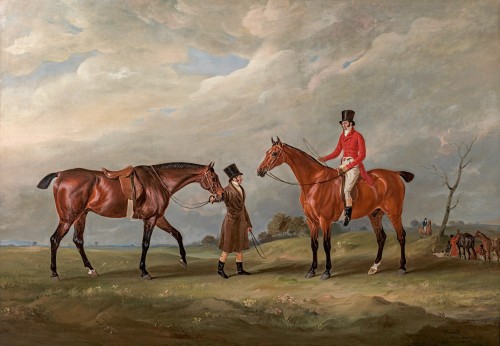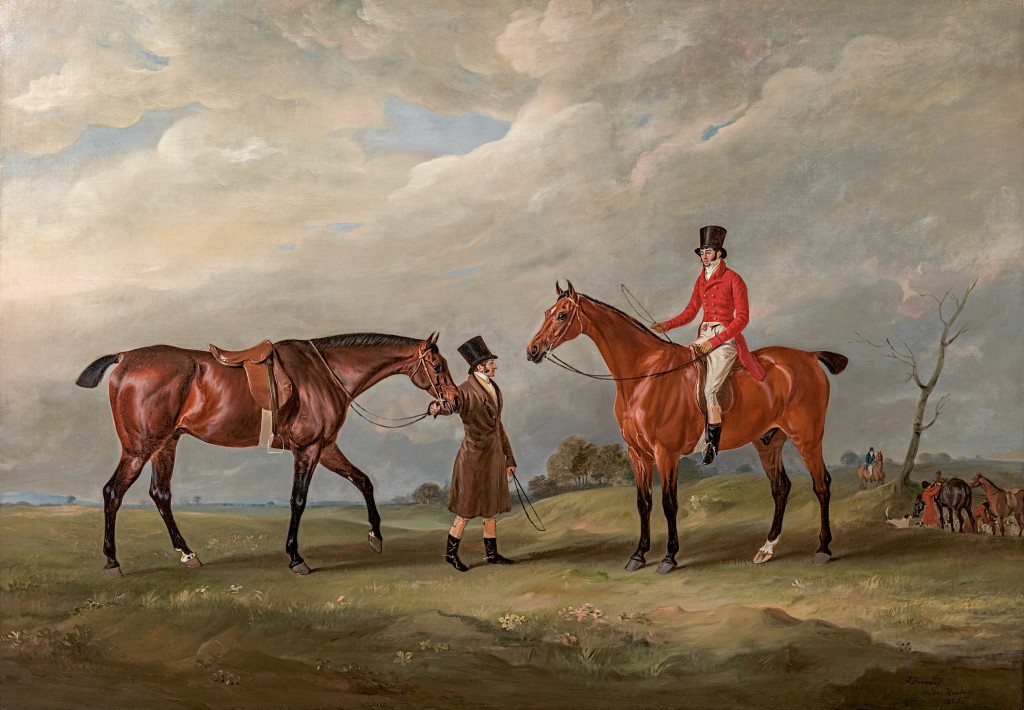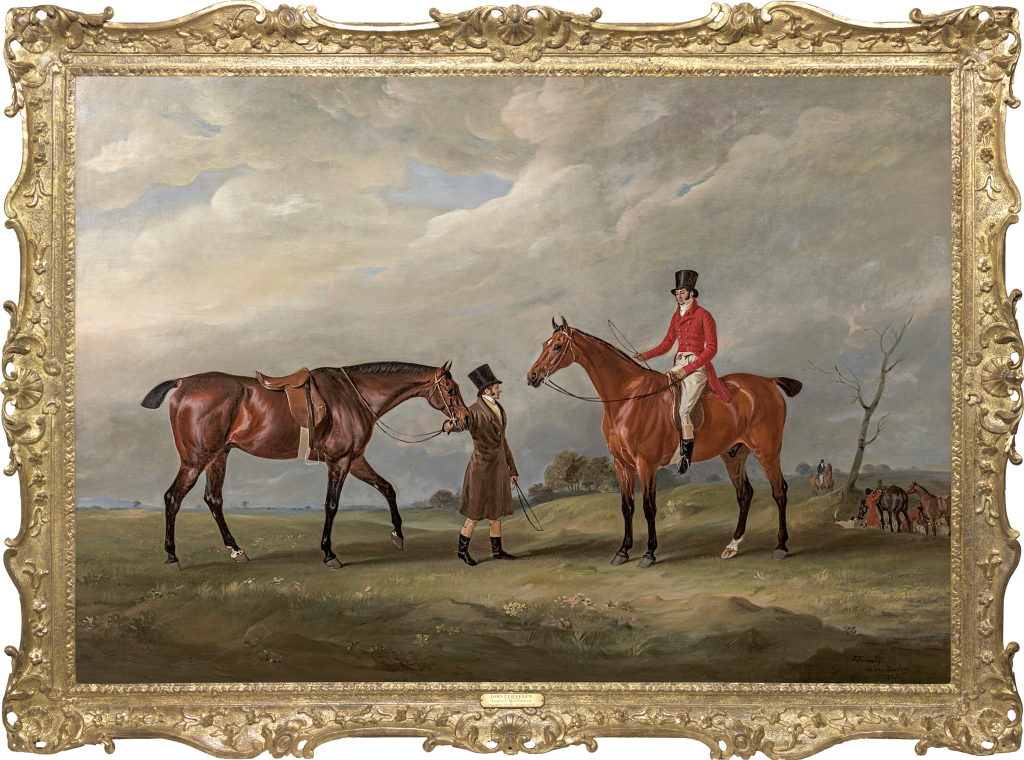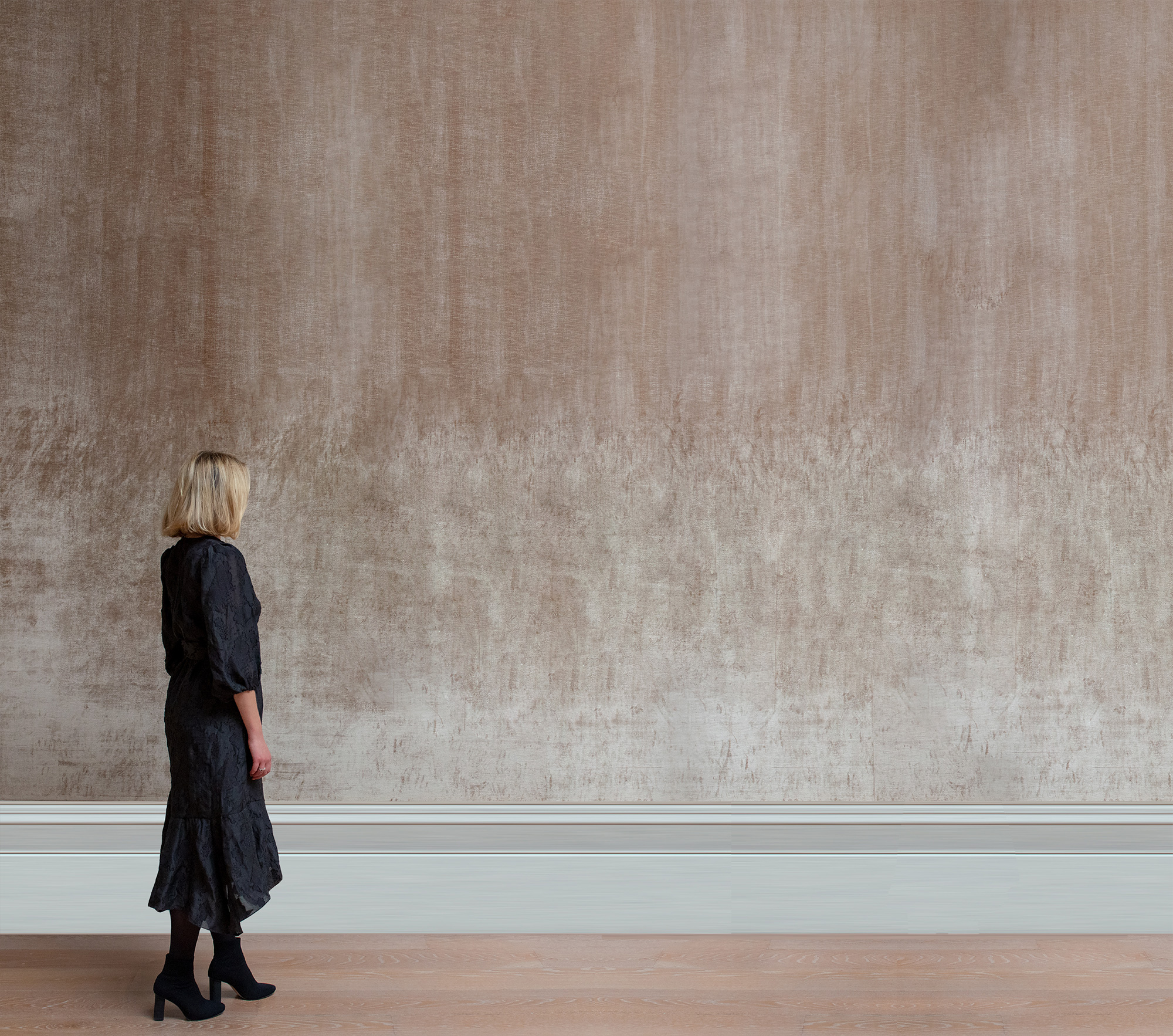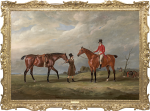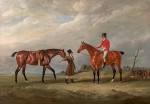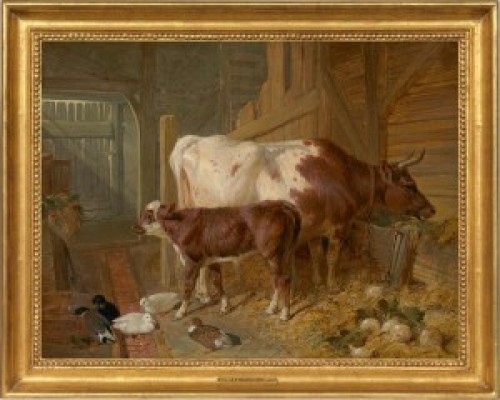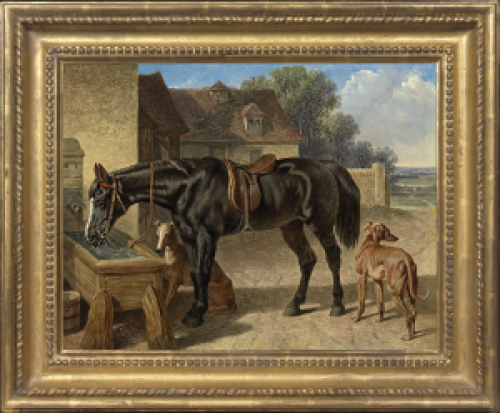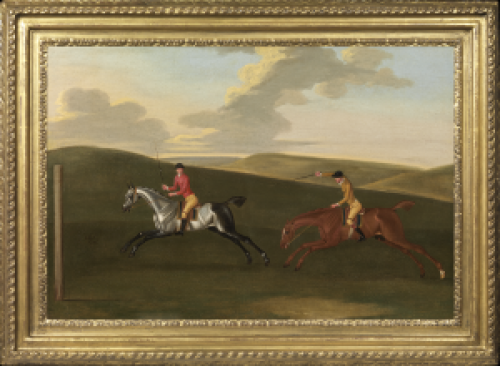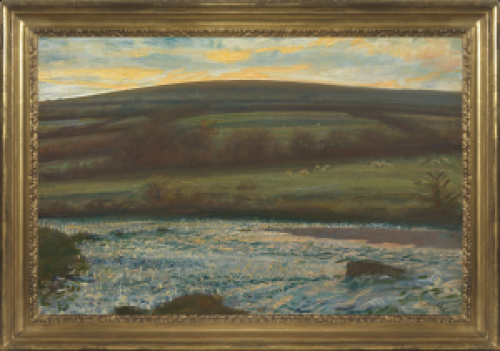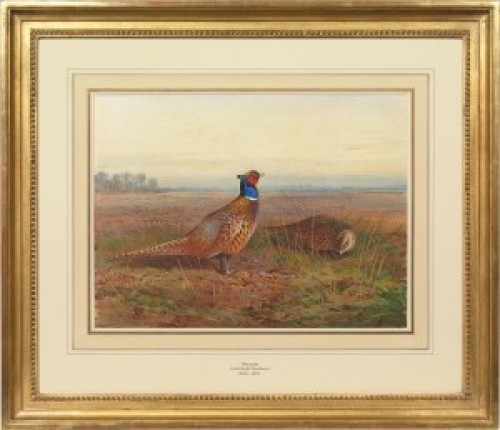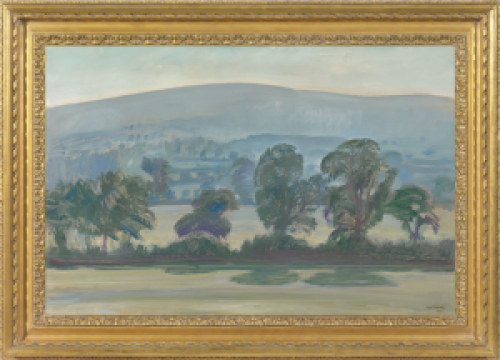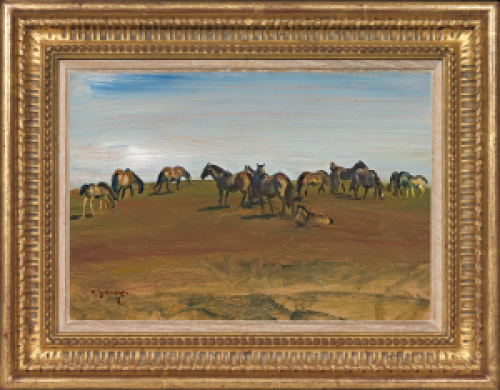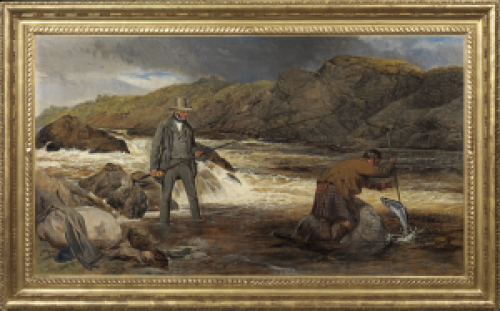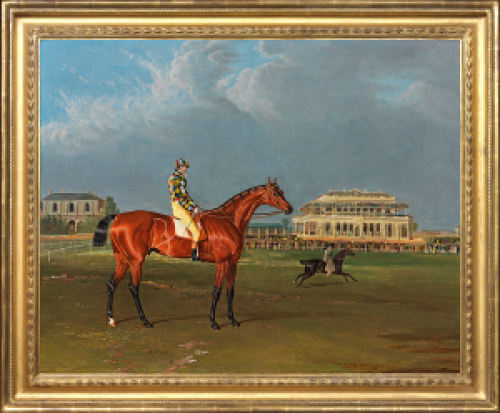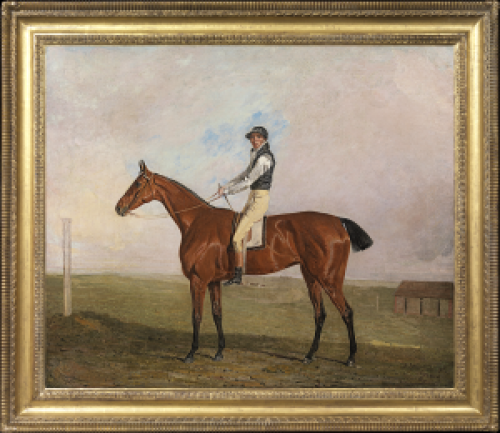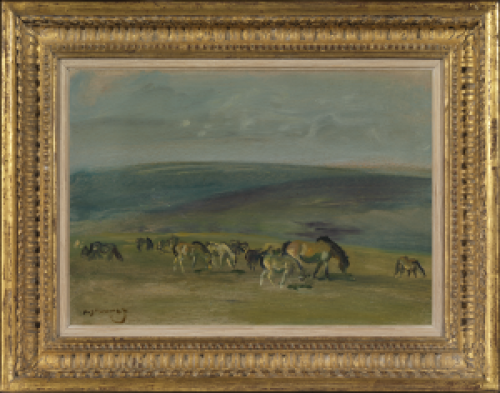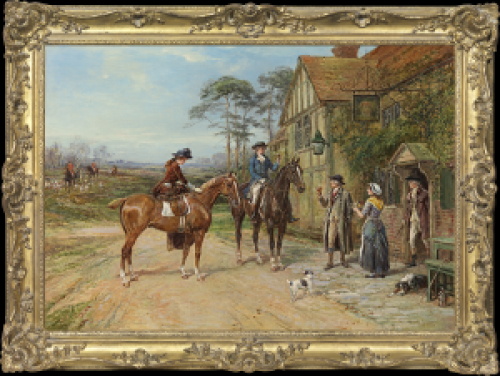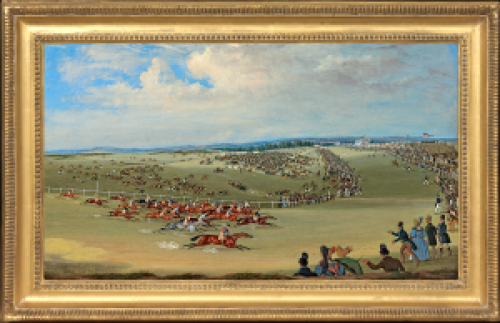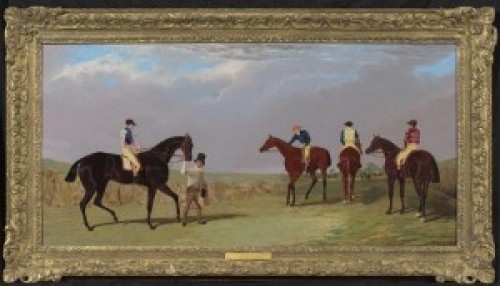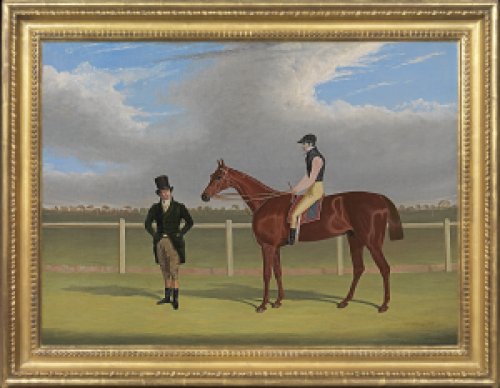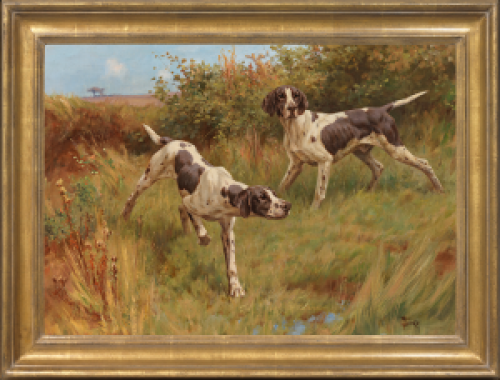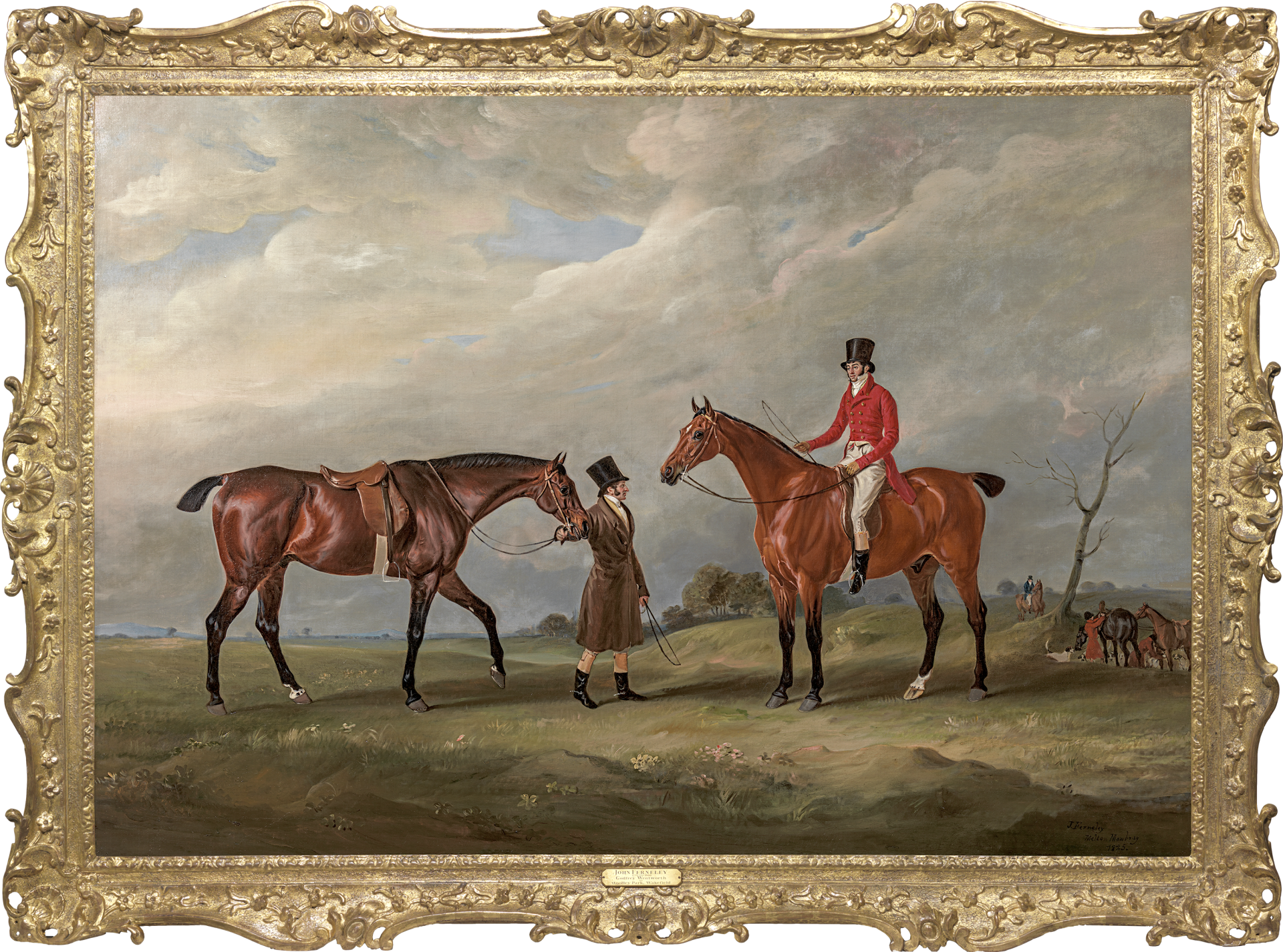JOHN FERNELEY SNR
Thrussington 1782 - 1860 Melton Mowbray
Ref: CB 213
Godfrey Wentworth (1773-1834) of Woolley Hall and Hickleton Hall, Yorkshire with his groom out hunting
Signed, inscribed and dated lower right: J. Ferneley / Melton Mowbray / 1825.
Oil on canvas: 42 ¼ x 61 in / 107.3 x 154.9 cm
Frame size: 52 ¼ x 70 ¾ in / 132.7 x 179.7 cm
In a nineteenth century carved and gilded swept and pierced frame
Provenance:
Eric William Towler (1900-1988), Glympton Park, Woodstock, Oxfordshire
Private collection, UK
Literature:
Major Guy Paget, The Melton Mowbray of John Ferneley/The Account Books of John Ferneley, Leicester 1931, Second Book of Accounts, p.133, no.198, £31 10s. (‘G. Wentworth, Esq., Hickleton Hall, near Doncaster. Portrait of Himself on Horseback, Groom, etc.’)
Sotheby and Co., The Towler Collection of Sporting Paintings and English Watercolours Glympton Park Spring 1971 (as Godfrey Wentworth of Hickleton Hall, Doncaster)
Robert Fountain, John Ferneley (1782-1860) Catalogue of Paintings, p.68, British Sporting Art Trust reference no.H.25.198.003 (‘G. Wentworth on his Hunter’; online at bsat.co.uk)
A Leicestershire man, born in hunting country, John Ferneley Snr lived in Melton Mowbray from 1814 until his death in 1860. He captured the glamour of the chase in the first half of the nineteenth century, when many aristocrats and gentry owned their own packs of foxhounds and also gathered in the Season to ride to hounds from Melton Mowbray, the town at the confluence of four famous hunts: the Quorn, the Cottesmore, the Belvoir and the South Nottinghamshire.
This portrait of the Yorkshire landowner Godfrey Wentworth depicts the perfectly-turned-out hunting man and the elegance of his expensive hunter. In the background, hounds mill around and huntsmen prepare to saddle up. Scudding clouds invoke a brisk autumn day. The rolling hills of the background are more reminiscent of Wentworth’s native Yorkshire than the Leicestershire countryside round Melton.
Godfrey Wentworth came from a cadet line of the Wentworth family whose magnificent main seat was Wentworth Woodhouse near Rotherham, south Yorkshire, home in the eighteenth century of the statesman Charles Watson-Wentworth, 2nd Marquess of Rockingham. Godfrey was the third son of Sir George Armytage, 3rd Bt., of Kirklees Hall and his wife Anna, daughter and coheir of Godfrey Wentworth (1704-1789). When his grandfather and namesake died, he took the name of Wentworth. Godfrey inherited his grandfather’s estates, Woolley Hall, Wakefield, west Yorkshire, where the family had lived since 1559, and Hickleton Hall, near Doncaster, south Yorkshire. The elder Godfrey Wentworth had bought Hickleton about 1730 and commissioned an elegant house from James Paine 1745-48.
In 1794 Godfrey Wentworth married Amelia, daughter of another Yorkshire landowner, Walter Ramsden Beaumont Fawkes of Farnley Hall, the Whig MP and patron of JMW Turner. He was a somewhat desultory MP for Tregony 1806-8, Sheriff of Yorkshire 1796-7 and for York in 1814. Wentworth was senior partner in the bank of Wentworth, Chaloner and Rishworth, which had branches in York, Huddersfield and Wakefield. When the bank failed in 1825, Wentworth was forced to sell the Woolley and Hickleton estates and live in London[1].
Note on the provenance
This painting was formerly in the collection of Eric William Towler, CBE (1900-1988), who rose from humble beginnings, working in a Yorkshire mine at the age of twelve, to become a successful industrialist and entrepreneur. He owned estates in Yorkshire, Shropshire and Somerset before settling at Glympton Park in Oxfordshire. A keen foxhunter, Joint Master of the Badsworth Hunt as a young man, Towler also built up a fine collection of sporting paintings, including several works by Ferneley and JF Herring Snr. He was Chairman of the Nuffield, the Radcliffe, United Oxford Hospitals and for his work in health service management was awarded the CBE and an Honorary MA by Oxford University.
JOHN FERNELEY SNR
Thrussington 1782 - 1860 Melton Mowbray
One of the most accomplished sporting artists of his day, John Ferneley Snr had a long and prolific career, and enjoyed considerable fame and fortune during his lifetime. Born at Thrussington in Leicestershire, fifteen miles from Belvoir Castle, the son of a wheelwright, Ferneley was first apprenticed to his father’s trade. His artistic talent was recognised by the young Henry Manners, 5th Duke of Rutland (1778-1857), who admired some of his pictures adorning a cart on which his father was working. In 1801, at the instigation of the Duke, Ferneley was sent to London to study with the successful Leicestershire-born sporting painter Benjamin Marshall (1768-1835). Ferneley was supposed to enrol at the Royal Academy Schools, but never attended.
From 1804, Ferneley travelled extensively around England, visiting Dover (to paint the Leicestershire Yeomanry under the Duke’s patronage), Norfolk and Lincoln. He painted Thomas Assheton Smith (1776-1856), from 1806 Master of the Quorn, in whose country Thrussington lay. In 1809 he went to Ireland, returning in 1810 and 1812, painting many pictures for the Irish gentry.
Ferneley married Sarah (Sally) Kettle in 1809; by 1811 he was earning over £200 a year. In 1814 he built a studio and house named Elgin Lodge at Melton Mowbray in Leicestershire, the town known as ‘the Queen of the Shires’ at the confluence of four famous hunts: the Quorn, the Cottesmore, the Belvoir and the South Nottinghamshire. His reputation earned him the patronage and friendship of many Meltonians and members of the aristocracy. He was commissioned by some of the most fashionable figures of the day, including Beau Brummel and Count d’Orsay. Ferneley was an enthusiastic practitioner of the field sports which he painted, keeping his own hunter and enjoying fishing, shooting, stalking and yachting. In 1810 he increased his charge for painting a single horse from five guineas to ten, keeping this rate for the rest of his career. Ferneley painted racing, shooting, stalking, horse and cattle fairs and portraits of dogs and farm animals. He is most celebrated, however, for hunting portraits. His immaculately turned-out gentlemen and elegant mounts epitomize the era of reckless bravery and high fashion on the hunting field. He excelled at the ‘hunt scurry’, panoramic works which depict ‘a number of identifiable riders galloping at splittercokation pace across the large, recently enclosed, pastures of the Midlands’[2].
Ferneley made annual visits to London and periodic visits to Scotland, Yorkshire and elsewhere in England. He exhibited at the Royal Academy between 1806 and 1853, as well as at the British Institution and Suffolk Street. Three of his children, Sarah (1811-1903), a watercolourist, John Jnr (1814-1862) and Claude Lorraine (1822-1891) became artists. He also taught Sir Francis Grant (1803-1878). John Ferneley Snr died in Melton Mowbray in 1860.
The work of John Ferneley Snr is represented in Leicester Art Gallery; Burghley House, Lincolnshire; Tate Britain, London; the Walker Art Gallery, Liverpool and the Yale Center for British Art, New Haven, CT.
[1] For biographical details on Godfrey Wentworth, see The History of Parliament: the House of Commons 1790-1820, ed. R Thorne, 1986.
[2] Robert Fountain, ‘Ferneley, John (1782-1860)’, Oxford Dictionary of National Biography, Oxford 2004.

